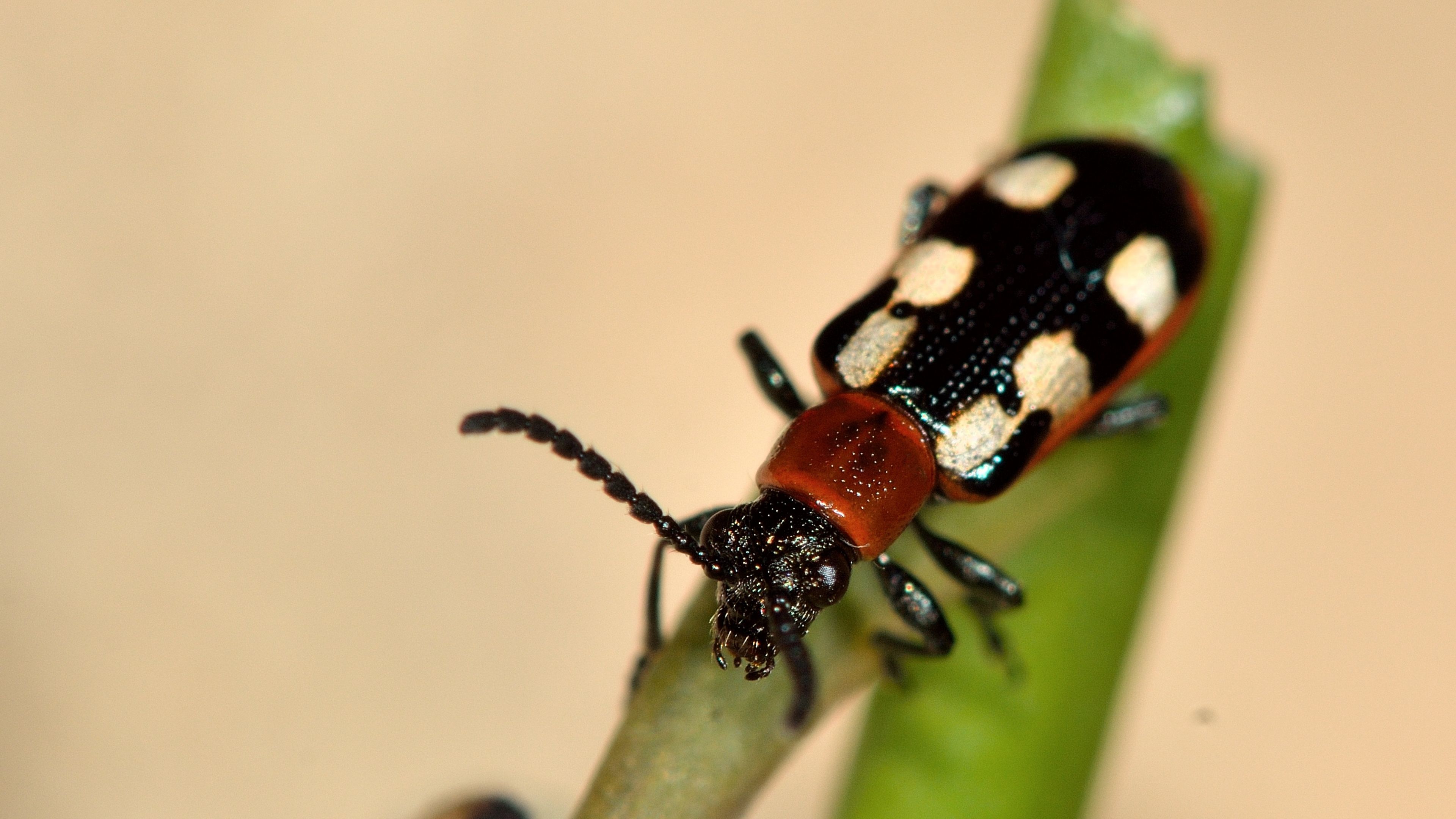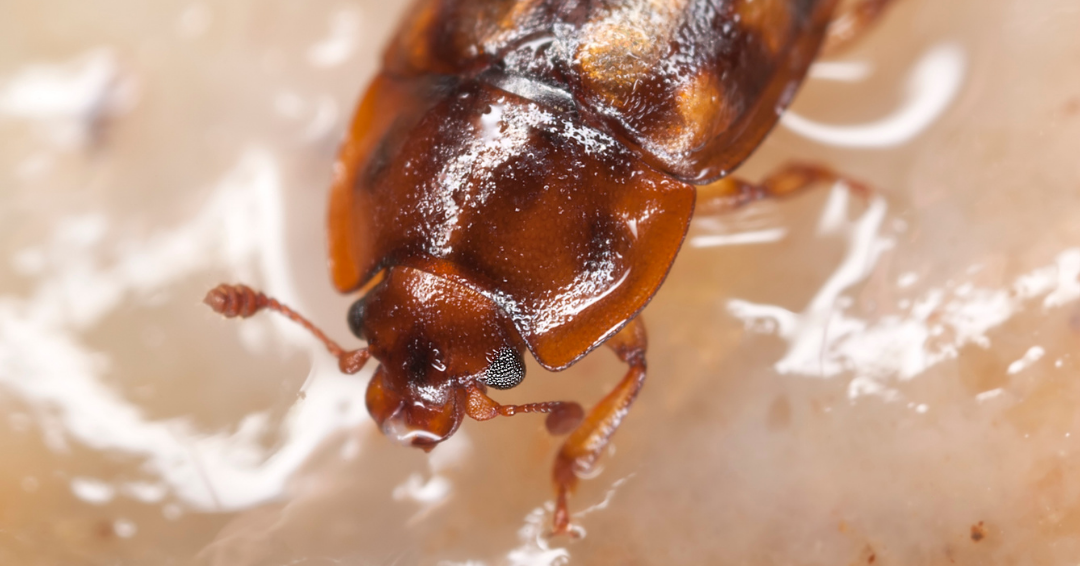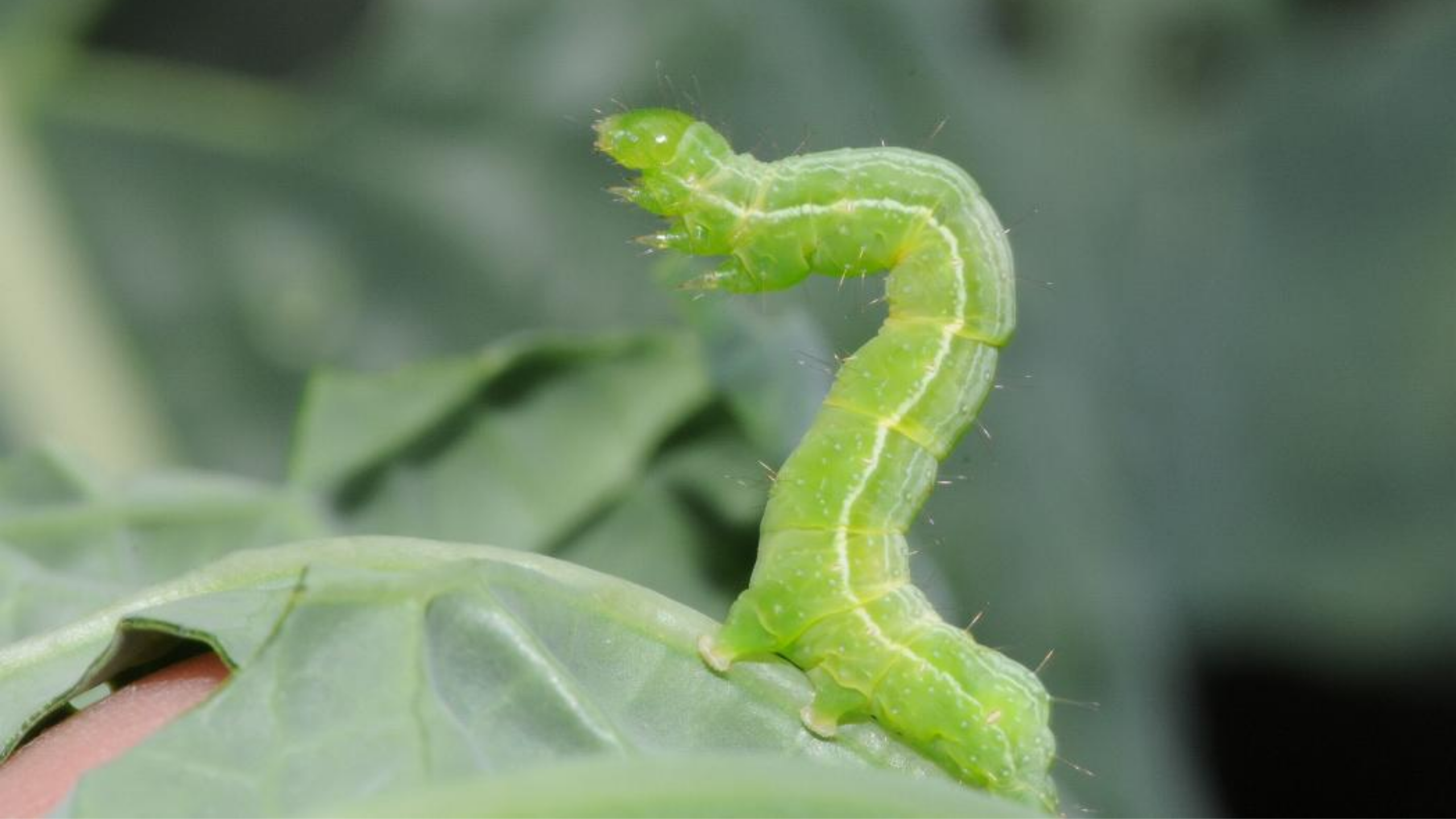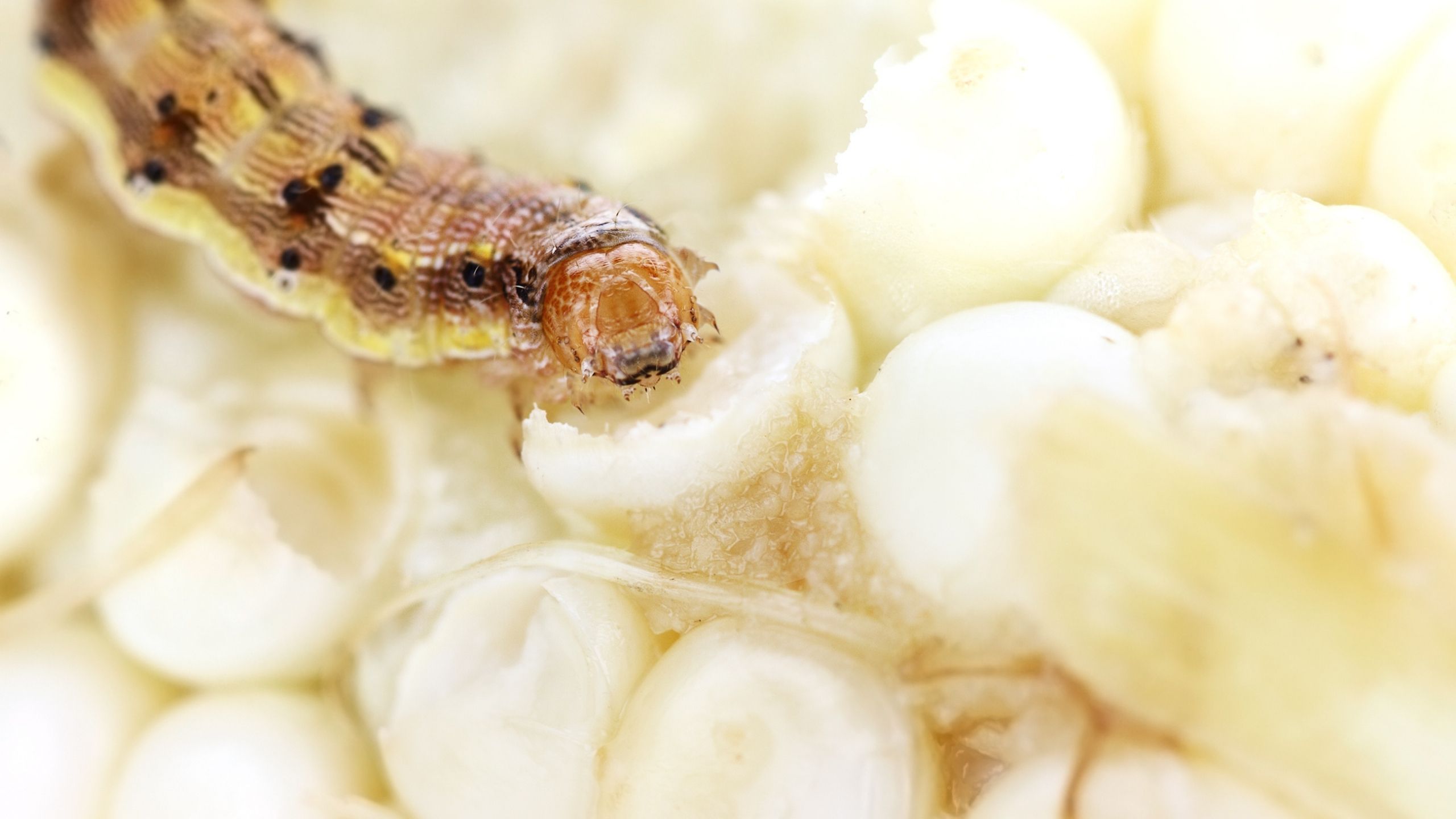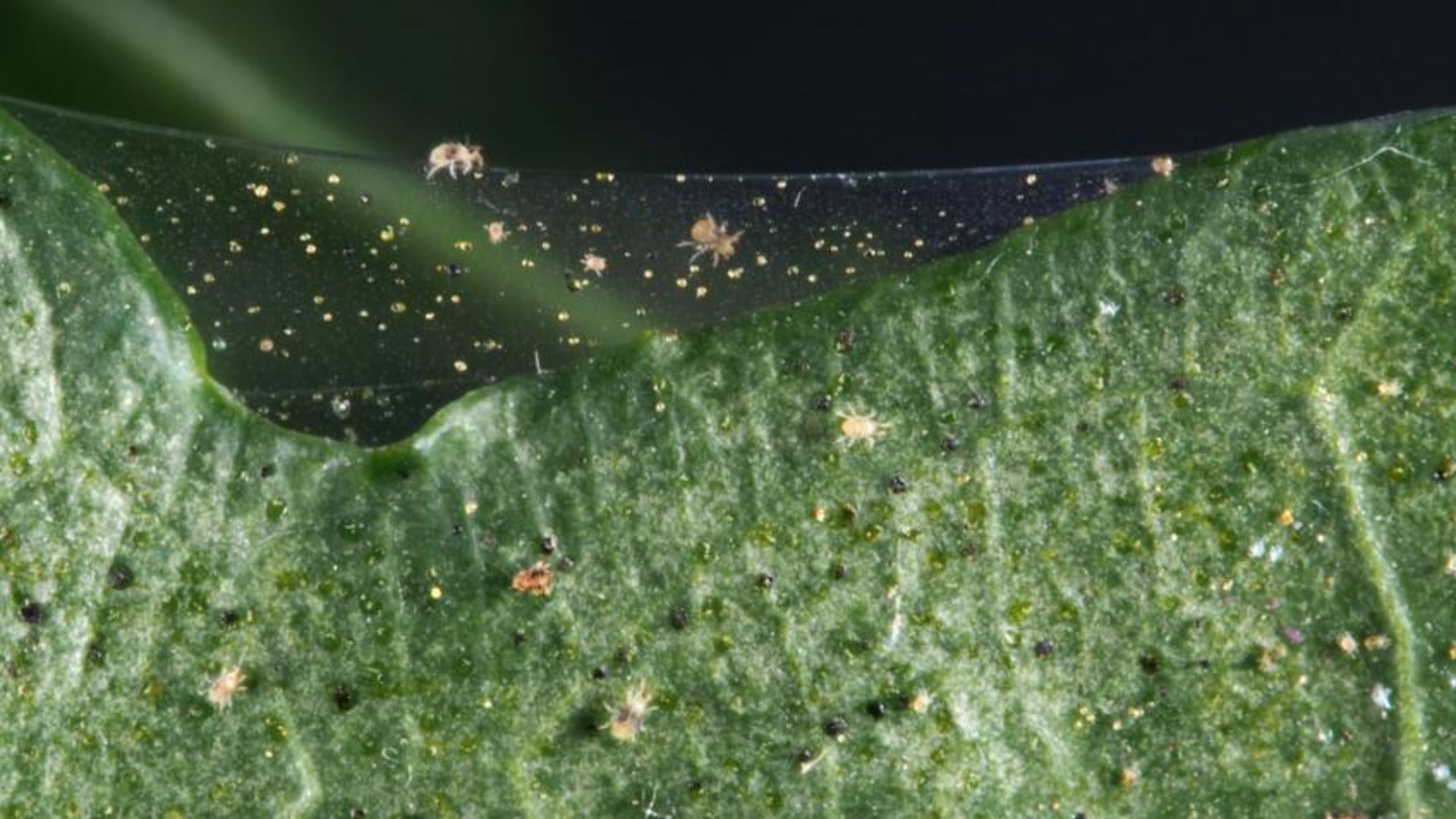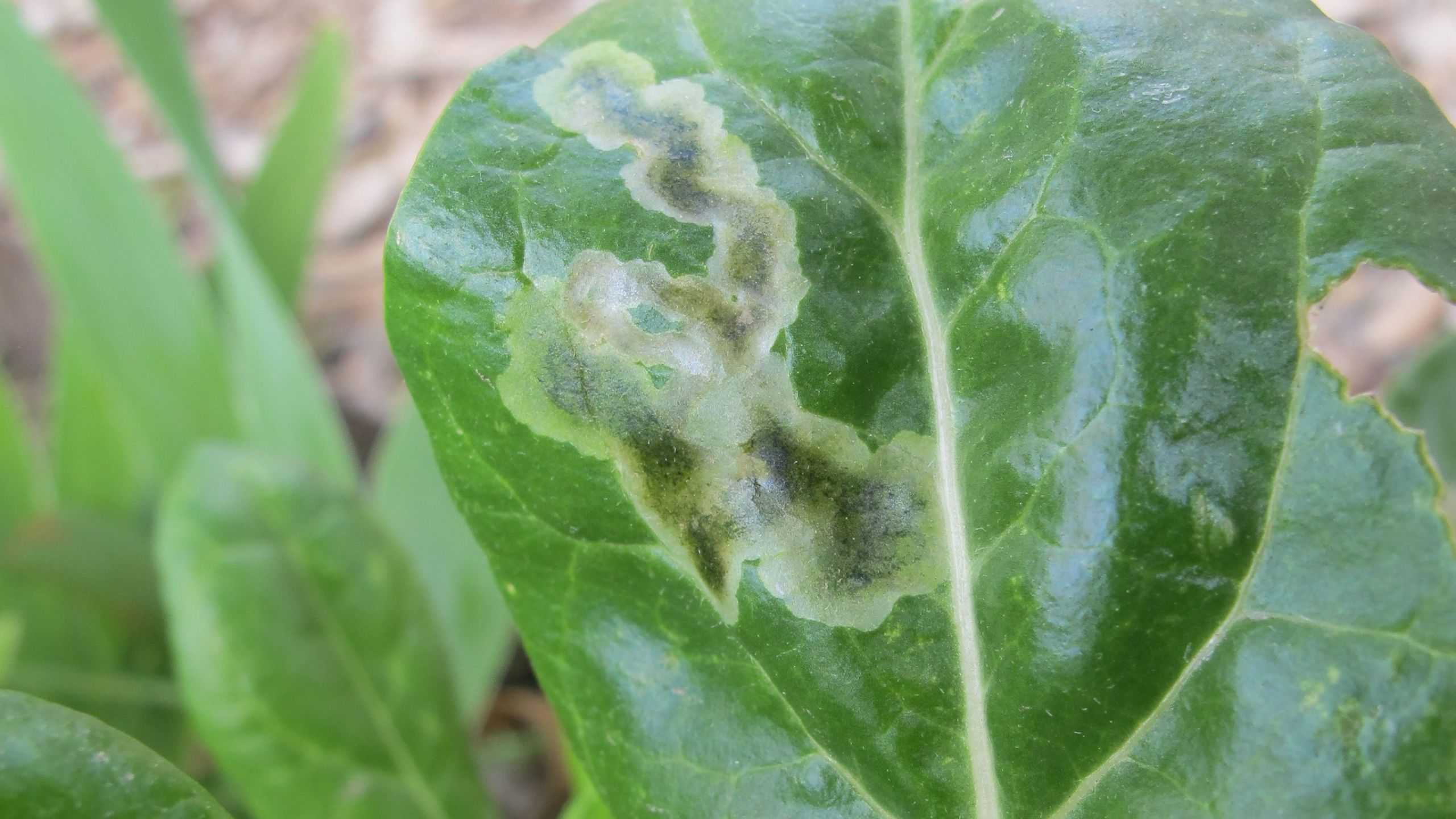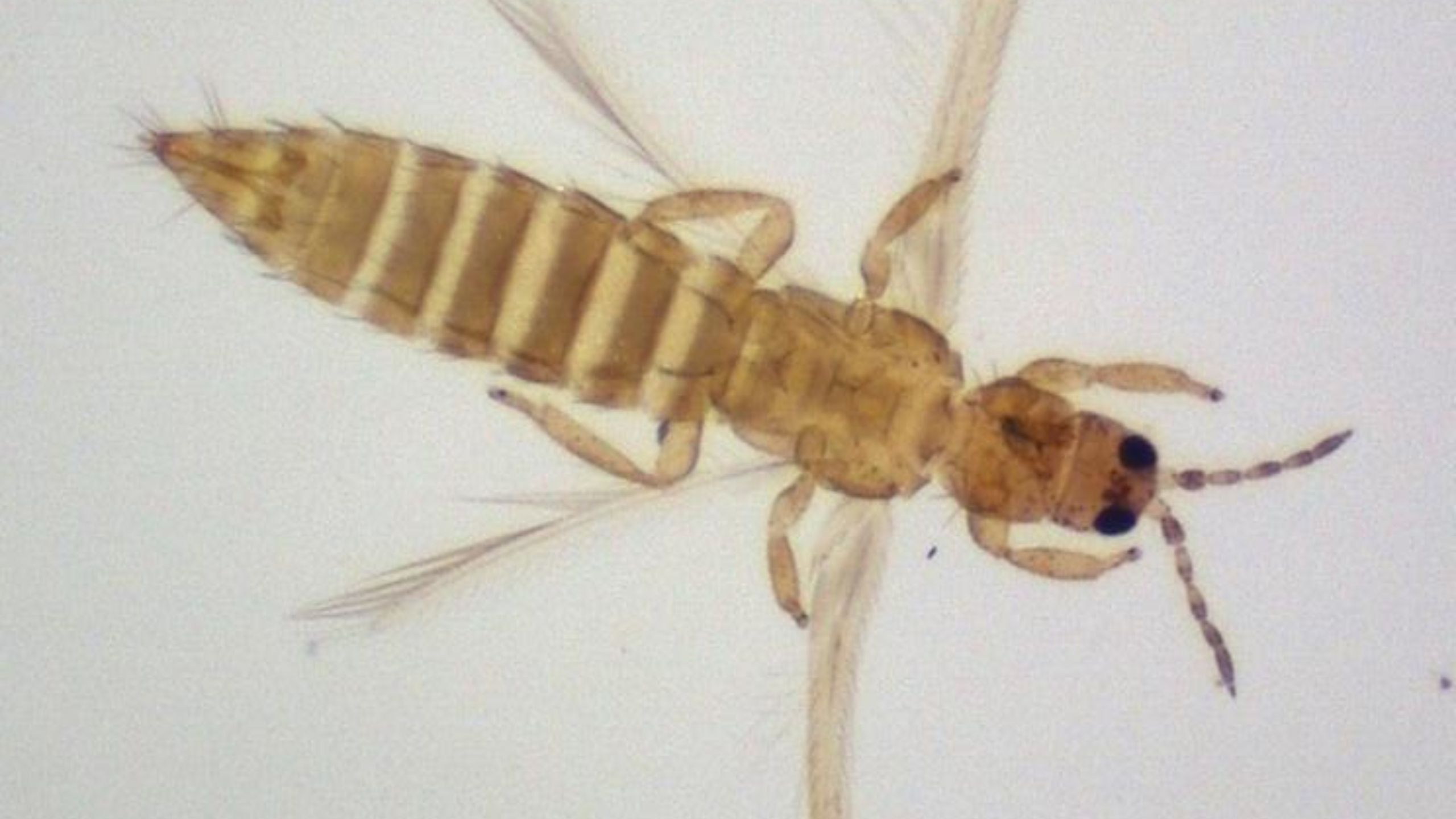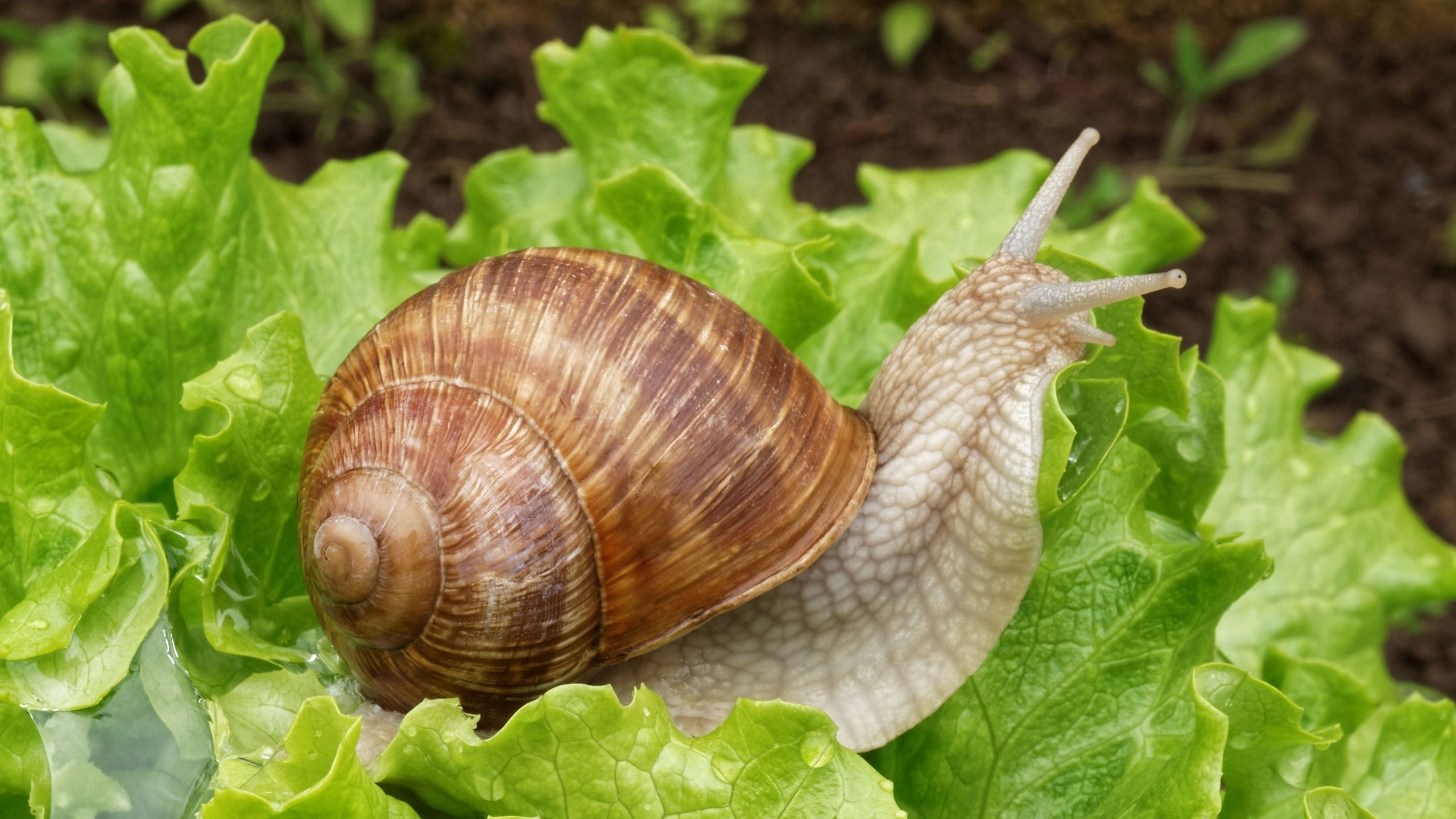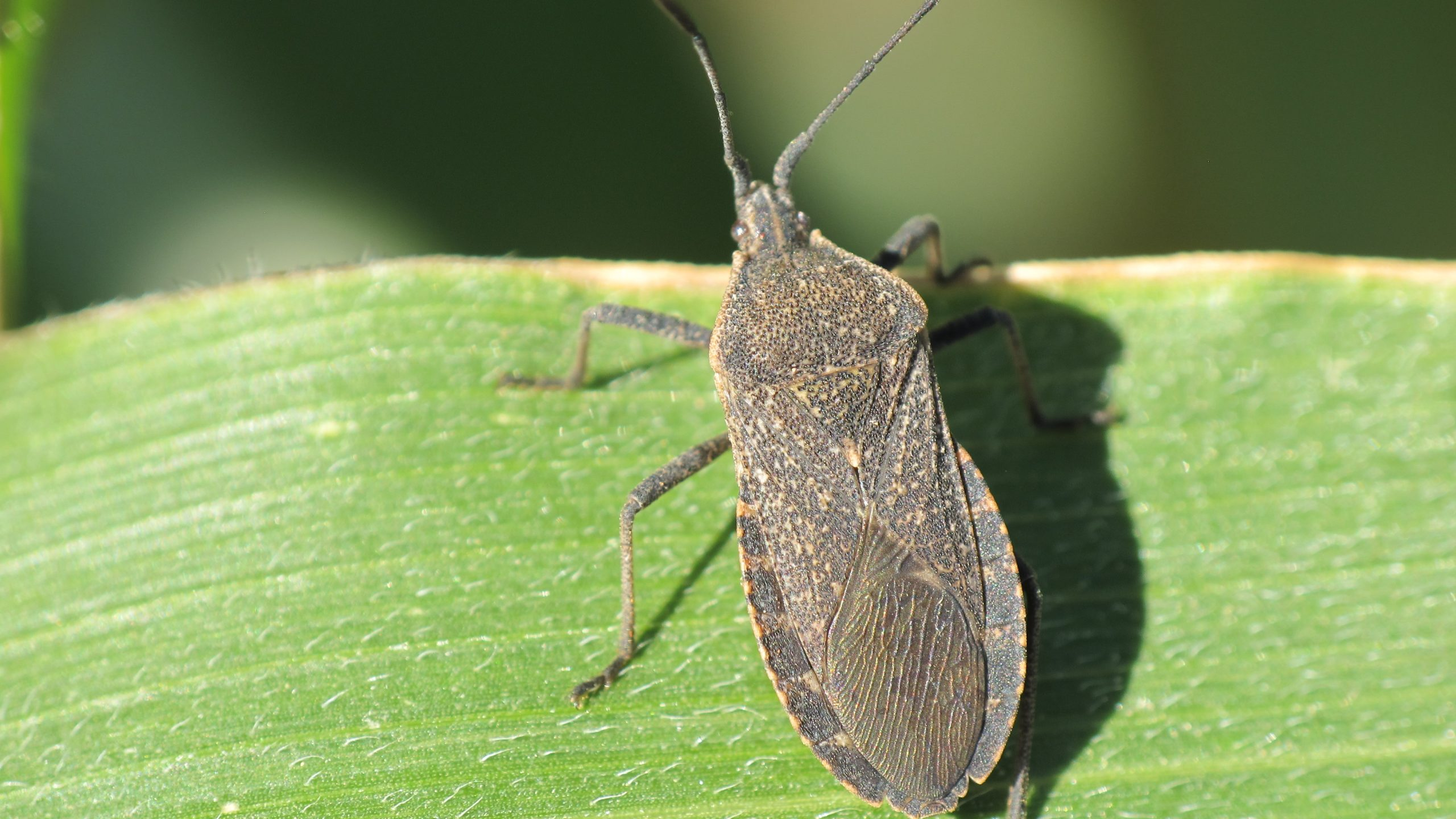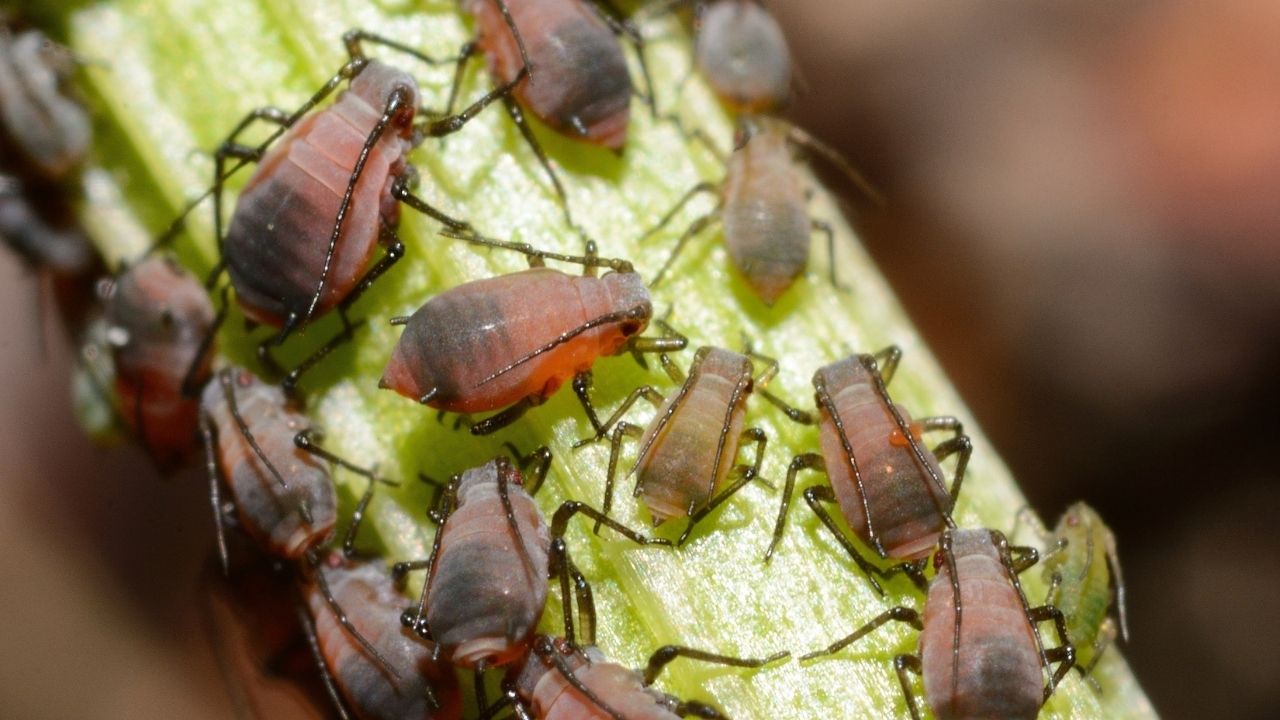Tomato Hornworm and Tobacco Hornworm
(Manduca quinquemaculata and Manduca sexta)
March 2019
Nick Volesky, Vegetable IPM Associate • Marion Murray, Extension IPM Specialist
Quick Facts
- Tomato and tobacco hornworms are the larval stages of the five-spotted hawk moth and Carolina sphinx moth.
- Hornworms feed on leaves, stems, blossoms, and fruits of host plants.
- Hornworms are managed by careful monitoring, hand-picking, and insecticides.
- In Utah, hornworms reach peak population in mid-summer.
Tomato and tobacco hornworms are closely related species that cause similar damage to the same host plants. Both are equivalent in size and appearance. Tomato hornworms are the larval stage of the fivespotted hawkmoth (Manduca quinquemaculata) and tobacco hornworms are the larval stage of the Carolina sphinx moth (Manduca sexta). Tomato and tobacco hornworms can both be found throughout Utah attacking host plants.
Hosts
Host plants of both species include members of the Solanaceae family such as tomato, pepper, potato, eggplant, along with various nightshade flowering plants. Additionally, tobacco is also targeted by tobacco hornworm.
Identification
Larvae of both species have five pairs of prolegs (fleshy abdominal limbs of a caterpillar), are a cylindrical shape, and are 4 inches long at maturity. The tomato hornworm is green with eight, white “V” markings along its back, pointing toward the head. At the end of its abdomen is a notable black tail spine (Fig. 1).
The tobacco hornworm is also green, but has seven diagonal white stripes with black margins along its body, and a distinctive orange-red tail spine (Fig. 2).
At the adult stage, the five-spotted hawkmoth (tomato hornworm) has a wingspan of up to 5 inches (13 cm). The wings are gray and brown with large front wings and small hind wings marked with a zigzag pattern. The moth’s abdomen is brown and white with a row of five yellow spots along each side (Fig. 4).
The Carolina sphinx moth (tobacco hornworm) has a wingspan up to 4 inches (10 cm). The wings are narrow with a gray, brown, and white pattern. On the abdomen are six yellow spots along each side (Fig. 5).
Both moths have long, coiled, tube-like mouthparts, which are used to extract nectar. They typically fly in the evening, hovering over flowers. In flight, they may be mistaken as hummingbirds.
Hornworm eggs are spherical in shape and 1.5 mm in diameter, ranging in color from white to a light green.
The pupa (chrysalis) is 2-3 inches long and dark brown. A noticeable feature is the “handle” structure in which the moth’s mouthparts will develop.
Look-alike caterpillars are the larvae of the white-lined sphinx moth (Hyles lineata). This caterpillar is primarily found on fruit and ornamental plants and will rarely be seen attacking vegetable crops. Tomato Fruitworms (Helicoverpa zea) are found on the same host crops but are significantly smaller.
Life Cycle
Both tomato and tobacco hornworms have the same life cycle (egg, larva, pupa, and adult) and both can have either one or two generations per year in Utah (Fig. 3).
The hornworms overwinter in the ground as pupae. In mid-spring, adults emerge and mate. This adult stage usually lasts 2 to 3 weeks.
The hornworms overwinter in the ground as pupae. In mid-spring, adults emerge and mate. This adult stage usually lasts 2 to 3 weeks.
The hornworm larva starts feeding immediately upon hatching, and grows throughout the summer as it undergoes 5-6 instars, reaching maturity within 3-4 weeks. The larva then drops to the soil near the base of the plant, burrows 4-6 inches down and pupates. A second generation of adults emerges about 2 weeks later.
Signs & Symptoms
Hornworm larvae have chewing mouthparts, and primarily feed on the host plant’s foliage. In their final instar and high populations, they can cause significant economic damage to crops. Hornworms will begin consuming the upper leaves first, and slowly move downward to lower leaves (Fig. 7). Loss of foliage may decrease fruit production and increase the risk of sunscalded fruit. Larvae also feed on fruits, blossoms, and stems when foliage runs out or populations are high (Fig. 6).
Monitoring
Monitoring is important because hornworm larvae can easily blend in with the foliage, so they may not be detectable until after damage has begun to occur. Begin monitoring in early July before hornworm populations reach their peak in mid-summer. Larvae tend to hide during the day, so scout in early morning or evening. Tomato plants are typically a good host plant to initially check in fields and gardens. Shake a portion of the plant over paper or cardboard to dislodge any larvae. Inspect a selection of plants for feeding damage on the newer foliage. Look on the foliage and ground for dark green-black frass pellets (excrement), which will be plentiful even with a few larvae present.
Management
There are a variety of integrated pest management strategies for tomato and tobacco hornworms that can reduce, remove, and prevent pest populations. These options include mechanical, cultural, biological, and chemical practices. For homeowners or gardeners with a small number of plants, handpicking caterpillars from the plant and submerging them in soapy water can quickly reduce damage. Another option is a light trap for the adult moths. Setting these up in the spring near the growing site can capture and kill moths when they emerge, this method may be more practical in commercial sites as a way to monitor population thresholds. One method of cultural control is tilling soil in spring or fall to disrupt and destroy overwintering pupae and reduce their population for the following season. There are many insects that contribute to natural biological control. Lady beetles (Coccinellidae) and green lacewings (Chrysopidae) prey on hornworm eggs. Paper wasps (Vespidae) will feed on many small caterpillars in gardens including early instar hornworm larvae.
Braconid wasps (Braconidae) are another important natural enemy, specifically Cotesia congregatus that parasitizes hornworms. This parasitoid lays its eggs inside hornworms. The eggs hatch and the wasp larvae then feed on the inside of the caterpillar. Mature wasp larvae then emerge from inside the caterpillar, and attach themselves to the hornworm’s body, where they pupate as white cocoons. This process ultimately kills the hornworm. If you find a parasitized hornworm, it is best to let it be. This will allow the wasp life cycle to continue (Fig. 10).
Pesticides are typically not necessary in small gardens, but could be considered as an option for large field production. There are a variety of organic and conventional insecticides available for both home and commercial growers (see Table 1).
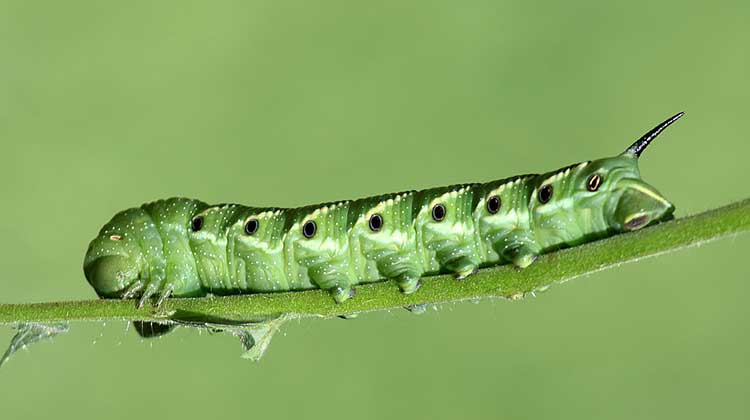
Fig. 1. Tomato hornworm (Manduca quinquemaculata). Image courtesy of TexasEagle, flickr.com.
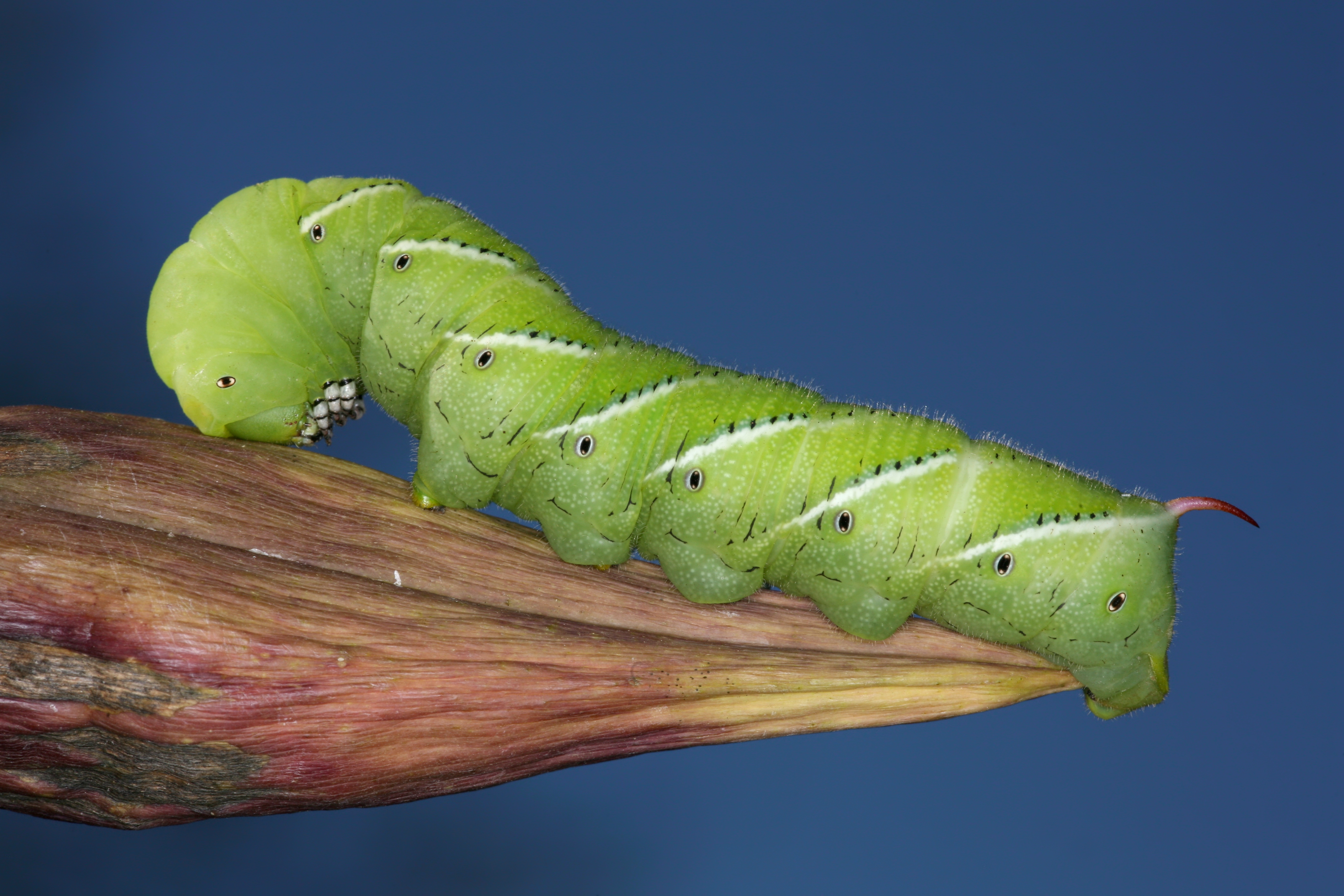 Fig. 2. Tobacco hornworm (Maduca sexta). Image courtesy of Daniel Schwen, wikipedia.com.
Fig. 2. Tobacco hornworm (Maduca sexta). Image courtesy of Daniel Schwen, wikipedia.com.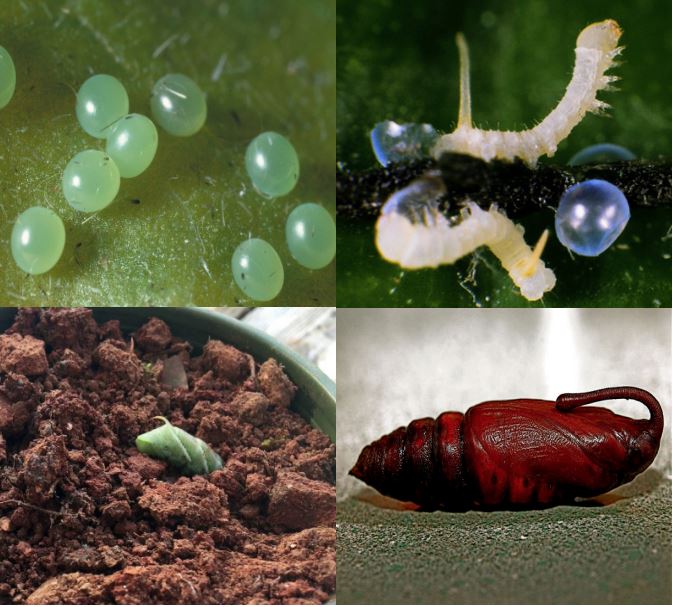 Fig. 3. Hornworm eggs (top left). First instar larvae hatching (top right). Larvae burrowing into the soil to begin ppation (bottom left). Hornworm pupa (bottom right). Image courtesy of (top left) Carolina Biological Supply Company, (top right) Peter J. Bryant, (bottom left) Chuck Murphy-YouTube, Bottom right: thingsbiological.wordpress.com.
Fig. 3. Hornworm eggs (top left). First instar larvae hatching (top right). Larvae burrowing into the soil to begin ppation (bottom left). Hornworm pupa (bottom right). Image courtesy of (top left) Carolina Biological Supply Company, (top right) Peter J. Bryant, (bottom left) Chuck Murphy-YouTube, Bottom right: thingsbiological.wordpress.com.
Fig. 4. Five-spotted hawkmoth (Manduca quinquermaculata), the adult stage of the tomato hornworm. Image courtesy of Oklahoma State University (Entomology & Plant Pathology).
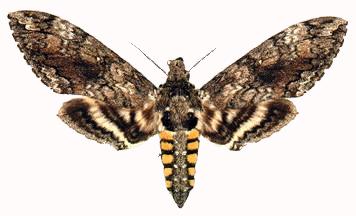
Fig. 5. Carolina sphinx moth (Manduca sexta), the adult stage of the tobacco hornworm. Image courtesy of Oklahoma State University (Entomology & Plant Pathology).
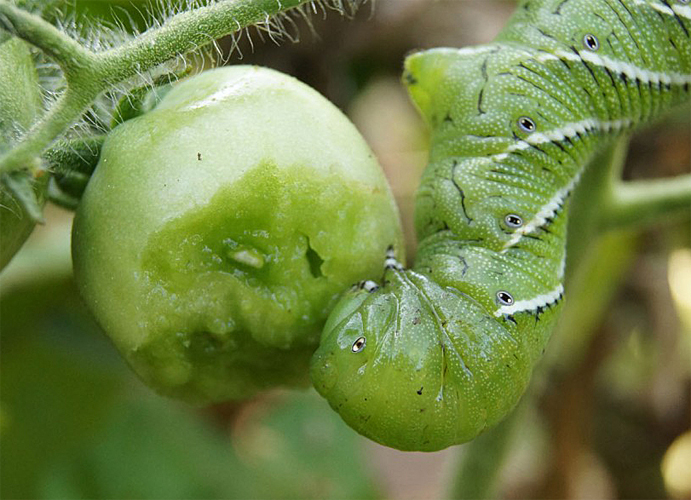
Fig. 6. Hornworm feeding on skin and flesh of tomato fruit. Image courtesy of cherthollowfarm.com.
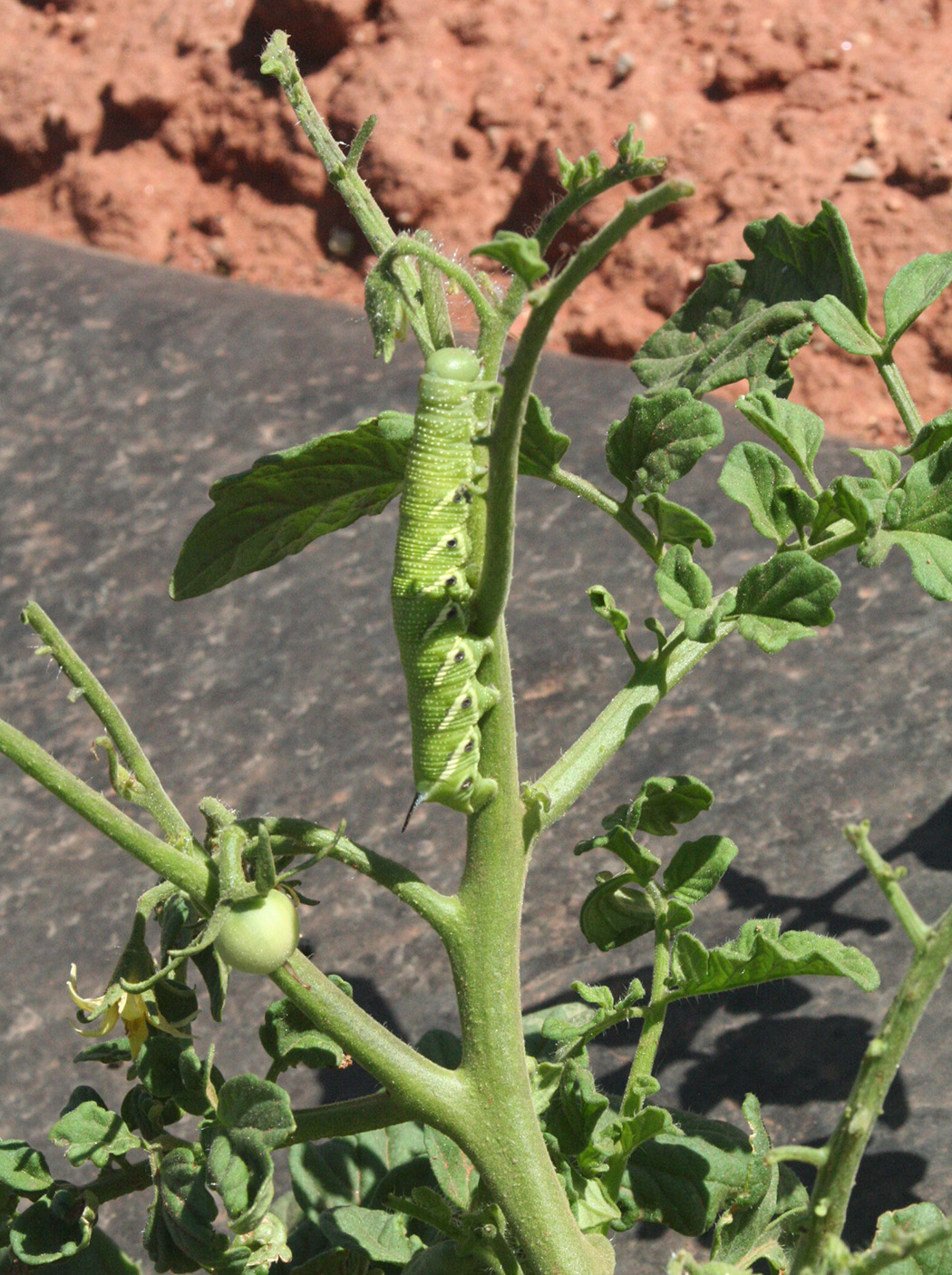
Fig. 7. Substantial defoliation on tomato plant caused by a single tomato hornworm. Image courtesy of Utah Vegetable Production & Pest Management Guide.

Fig. 8. Tomato plant defoliation caused by tomato hornworm. Image courtesy of University of Florida (Entomology & Nematology).
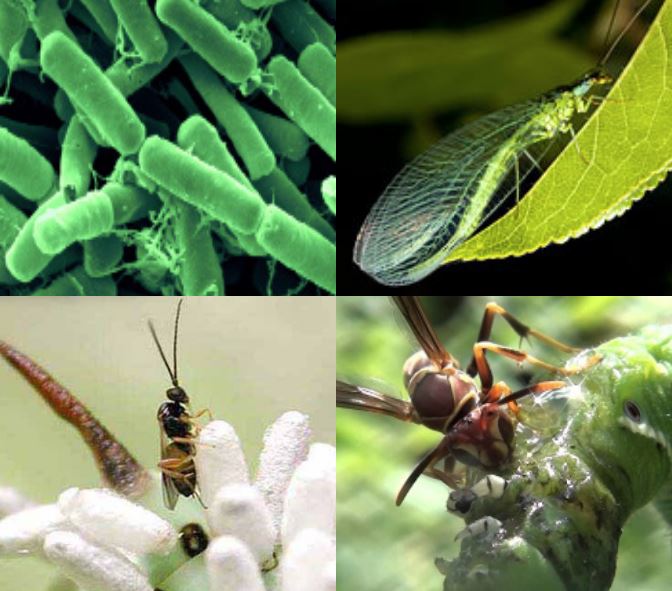
Fig. 10. Biological control agents for hornworms: Bacillus thuringiensis bacteria that forms toxic crystals during sporulation is often found in pesticides (top left). Green lacewing (Chrysopidae) (top right). Braconid wasp (Cotesia congregata) (bottom left). Paper wasp (Vespidae) consuming a hornworm (bottom right). Image courtesy of (top left) FineArt America, (top right) Arbico-Organics, (bottom left) Texas A&M University (Horticulture), Bottom right: Getawayoments (YouTube).
Examples of effective home and commercial use insecticides registered in Utah.
| Use | Active Ingredient | Brand Name | MoA* | Residual (Days) | Notes |
|---|---|---|---|---|---|
| Home | zeta-cypermethrin | Garden Tech Sevin | 3A | 3 | |
| Home | spinosad | Bonide Captain Jack’s DeadbugB, Monterey Garden Insect SprayOB, Natural Guard Spinosad SprayOB | 5 | 4 | |
| Home | Bacilus thuringiensis (subspecies kurstaki) | Bonide ThuricideOB, Safer Caterpillar killer with BtOB, Natural Guard Caterpillar Killer w/ BtOB, Dipel DustOB, Garden Safe Bt Worm and Caterpillar KillerOB | 11A | 5-7 | Only effective on young caterpillars (less than 0.5 inch) |
| Commercial | Bacillus thuringiensis (subspecies aizawai strain) | XenTariOB | 11A | 3 | Only effective on young caterpillars (less than 0.5 inch) |
| Commercial | carbaryl | Sevin, Carbary | 1A | 3 | |
| Commercial | spinosad | EntrustO, Success | 5 | 5-7 | |
| Commercial | fenpropathrin | DanitolR | 3 | 7 | |
| Commercial | emamectin-benzoate | ProclaimR | 6 | 7 | Effective on eggs and small caterpillars. |
*Mode of Action (MoA) is a classification number based on guidelines from the Insecticide Resistance Action Committee. Rotate among insecticide classes to reduce the development of resistance.
O Organically certified insecticide products.
R Restriced use products that require an applicator license.
B Biological pesticide
References and Further Reading
- Bauernfeind, B. 2006. Tomato Hornworms. K-State Research & Extension.
- Cannon, C., Murray, M., Alston, D., & Drost, D. 2018. 2018 Utah Vegetable Production And Management Guide. Logan, UT: Utah State University Extension.
- Cannon, C., Murray, M., Beddes, T., & Schaible, C. Vegetable Pests of Utah. Logan, UT: Utah State University Extension.
- Cranshaw, W., & Shetlar, D. J. 2018. Garden insects of North America: The ultimate guide to backyard bugs. 2nd Edition. Princeton, NJ: Princeton University Press.
- Crankshaw, W. Hornworms and “Hummingbird” Moths. 2014. Ft. Collins, CO: Colorado State University Extension.
- Flint, M. L. 2018. Pests of the garden and small farm: A growers guide to using less pesticide. Oakland, CA: University of California, Agriculture and Natural Resources.
- Flint, M. L., Sutherland, A., & Windbiel-Rojas, K. 2018. Vegetable Pest Identification for Gardens and Small Farms. Davis, CA: University of California, Agriculture and Natural Resources Communication Services.
- Gray, B. Braconid Wasp on Hornworms. 2006. Houston, TX. Texas A&M University Extension.
- How to Manage Pests. University of California IPM Program.
- Karren, J. B. 1999. Tomato and Tobacco Hornworms. Utah State University Extension.
- Liberatore, A. 2018, March 05. Sphinx Moths.
- Wold-Burkness S.J., Hutchison W.D. 2015, June 09. Tomato Hornworm.
- Teach Life Cycles with the Tobacco Hornworm.
- Tomato hornworms. University of Minnesota Extension.
- Tomato Hornworm. University of Massachusetts Extension. 2016.
- Wyatt, L.J. 2014, July 28. 6 Ways to Control Tomato Hornworms.


